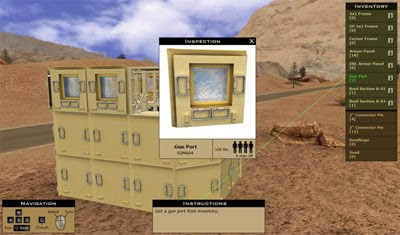Global Industry Analysts Report: Demand for Innovative and Efficient Surgical Systems Drives the Global Market for Virtual Reality in Healthcare.
Global Industry Analysts (GIA) recently announced the release of a global report on virtual reality in the healthcare industry. The report determines that the demand for simulation-based medical training will drive the market for virtual reality in healthcare, and projects that the global market for healthcare simulator-based training will reach US$2.43 billion by the year 2018. The report also points to the ever-increasing performance and reliability of training simulators, the decreasing cost of high-power computing, and the current adoption rate of virtual reality technology in the healthcare sector over the past decade.
Within the medical industry, the need to improve training and efficiency while reducing costs is as important as in any other industry. Virtual training simulators are one of the most effective methods to provide the necessary training and instruction, while removing many of the barriers to entry due to cost and risk.
The report is titled "Virtual Reality in Healthcare - A Global Strategic Business Report" and includes comprehensive analytics for the United States, Asia-Pacific, Canada, Europe, Japan, and 'The Rest of the World'. The report provides historic data for an insight into market evolution, growth drivers, market challenges, key issues, technology trends, and recent product innovations. The report also includes annual sales estimates and projections for the global market for the next 6 years (present - 2018).
Montefiore Medical Center: "Criterion-Based (Proficiency) Training to Improve Surgical Performance"
A recent report title "Criterion-Based (Proficiency) Training to Improve Surgical Performance" completed by Montefiore Medical Center is available from the Archives of Otolaryngology-Head and Neck Surgery. The report determines that current requirements for surgical proficiency do not properly address the individual surgical capabilities of students, and that simulation-based training could vastly improve the skills of these surgeons-in-training before they ever operate on a living patient. The study's Principle Investigator, Dr. Marvin P. Fried, MD, FACS, University Chairman Department of Otolaryngology-Head and Neck Surgery at Montefiore Medical Center says:"We have been studying this subject since 2000 and the results of each of our studies have shown that technical abilities are highly individualistic, skill levels progress at varying speeds. Simulation training is an invaluable tool in creating a competent surgeon in a safe and controlled environment, which ultimately helps to ensure patient safety and produce the best outcomes."
Surgical simulators allow for additional training without the need for live patients and operating rooms, vastly improving healthcare safety and efficiency.
3D Heartbeat Simulator Visualizes Pulsation and Disease
The National Cerebral and Cardiovascular Center in Osaka, Japan recently released a virtual heartbeat simulator running on typical off-the-shelf laptops, that is capable of simulating complex pulsations of the heart. Until now, accurately simulating heart pulsation in real-time 3D has taken offline super-computers to complete the job. With technology speed and power always increasing, off-the-shelf lap tops and gaming software-based simulators are now able to get the job done online, faster and more effectively.Using a shape matching technology the software divides the heart into 7,000 individual shapes with bounding edges and constraints. The simulator allows trainees to simulate virtual heart attacks and heart diseases and take cross sections to examine and study a complex organ under a variety of conditions.
Medical training simulators can now provide highly realistic virtual learning environments that are safe and cost-effective, and allow for repeated practice-until-perfect, increasing the skill and proficiency of future surgeons. Training simulators include operator performance metric tracking systems, allowing trainees and instructurs to quickly identify what areas they need to focus on. In additional, sales and marketing staff can benefit from having a virtual product to demonstrate, rather than having to schedule real-world demonstrations on live patients.




